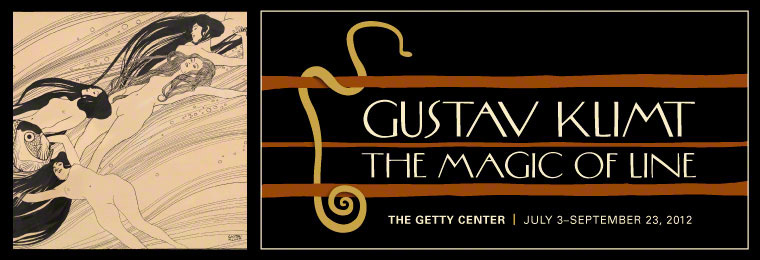This exhibition is the first retrospective fully dedicated to the drawings of Gustav Klimt (1862–1918).
This major loan exhibition was organized by the Albertina Museum, Vienna, in association with the J. Paul Getty Museum, to mark the 150th anniversary of Klimt's birth. The drawings in this exhibition come mostly from the Albertina, which houses one of the most comprehensive collections of Klimt drawings. They are supplemented by works from the J. Paul Getty Museum, the Getty Research Institute, and a number of generous lenders.
Gustav Klimt was one of the seminal figures of international Modernism. His entire artistic enterprise was based on drawing, which he practiced every day. Approximately 4,000 of Klimt's drawings survive, and this is surely but a portion of the total number he made.
Gustav Klimt was one of the seminal figures of international Modernism. His entire artistic enterprise was based on drawing, which he practiced every day. Approximately 4,000 of Klimt's drawings survive, and this is surely but a portion of the total number he made.
- AUDIO: Why was drawing so important to Klimt?
Update Required
To play the media you will need to either update your browser to a recent version or update your Flash plugin.
From his earliest work in the 1880s to his death, the centerpiece of Klimt's draftsmanship, indeed of his artistic creativity as a whole, was life drawing from the nude model, in particular the female nude. It was through drawing that Klimt developed his momentous themes of
human suffering, longing for love and happiness, and the cycle of life from
birth to death.
Over the course of his career, Klimt journeyed from an
academic drawing style with three-dimensional and shaded figures to an ethereal language of pure line and light touch by which he expressed his
concern with the ever-changing and inescapable stream of human
existence. Through drawing, Klimt arrives at the planarity (an emphasis on the two-dimensional surface of the picture plane), the interweaving of
human forms, and the paradoxical sense of a figure's sensual presence but spatial remove that are all central to his unique expression of Modernism.
Also on View: Works by Contemporaries of Gustav Klimt
To complement Gustav Klimt: The Magic of Line, four works by contemporaries of Klimt—Franz Matsch, Alphonse Mucha, Fernand Khnopff, and František Kupka—are on display in the West Pavilion, Gallery W104.Learn more about this display »
Publication
Gustav Klimt: The Magic of Line
By Marian Bisanz-Prakken
By Marian Bisanz-Prakken


